AN ANTHROPOLOGICAL STUDY OF THE JOSEON DYNASTY.
Joseon 조선 in Korean, 朝鮮 in Hanja, or Chosŏn, officially Great Joseon State (대조선국; 大朝鮮國, was the last dynastic kingdom of Korea, lasting just over 500 years. It was founded by Yi Seong-gye in July 1392 and replaced by the Korean Empire in October 1897. The kingdom was founded following the aftermath of the overthrow of Goryeo in what is today the city of Kaesong. Early on, Korea was retitled and the capital was relocated to modern-day Seoul. The kingdom’s northernmost borders were expanded to the natural boundaries at the rivers of Amrok and Tuman.
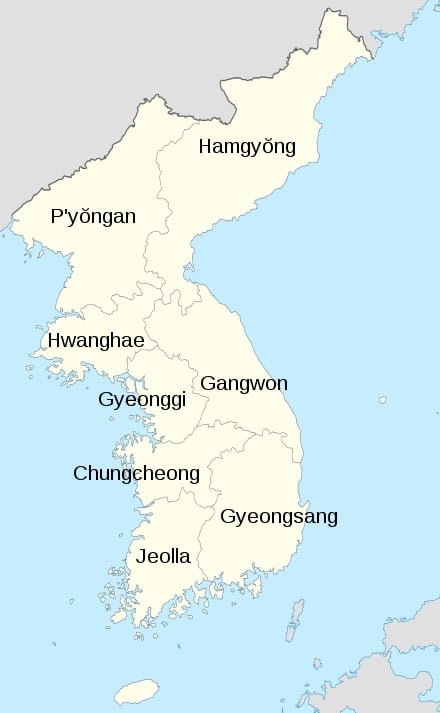
It was a time of great change in Korea; one of innovation, and invasion. One of technology, and treachery. One of great social change, and grinding conservatism.
During its 500-year duration, Joseon encouraged the entrenchment of Confucianism ideals and doctrines in Korean society. Neo-Confucianism was installed as the new state’s ideology. Buddhism was accordingly discouraged, and occasionally Buddhists faced persecutions. Joseon consolidated its effective rule over the Korean peninsula and saw the height of classical Korean culture, trade, literature, and science and technology. In the 1590s, the kingdom was severely weakened due to the two failed Japanese invasions of 1592 and 1598. Several decades later, Joseon was invaded by the Later Jin dynasty and the Qing dynasty in 1627 and 1636–1637 respectively, leading to an increasingly harsh isolationist policy, for which the country became known as the “hermit kingdom” in Western literature. After the end of these invasions from Manchuria, Joseon experienced a nearly 200-year period of peace and prosperity, along with cultural and technological development. What power the kingdom recovered during its isolation waned as the 18th century came to a close. Faced with internal strife, power struggles, international pressure, and rebellions at home, the kingdom declined rapidly in the late 19th century.
The Joseon period has left a substantial legacy to modern Korea; much of modern Korean culture, etiquette, norms, and societal attitudes toward current issues, along with the modern Korean language and its dialects, derive from the culture and traditions of Joseon. Modern Korean bureaucracy and administrative divisions were also established during the Joseon period.
SOCIAL STRUCTURE.
Society in the Joseon dynasty was built upon Neo-Confucianist ideals, namely the three fundamental principles and five moral disciplines. There were four classes: the Yanban nobility, the “middle class” Jungin, Sangmin, or the commoners, and the Cheonmin, the outcasts at the very bottom. Society was ruled by the yangban, who constituted 10% of the population and had several privileges. Slaves were of the lowest standing.
There was a definite social structure in Korea during the Joseon Dynasty with the king, on top and cheomin (low born/despised people) at the bottom, with a patriarchal attitude throughout society. There were a few who chose not to let society dictate how they lived however.
Traditionally, a person could Increase their rank in society through education, but not by becoming wealthy or serving in the military.
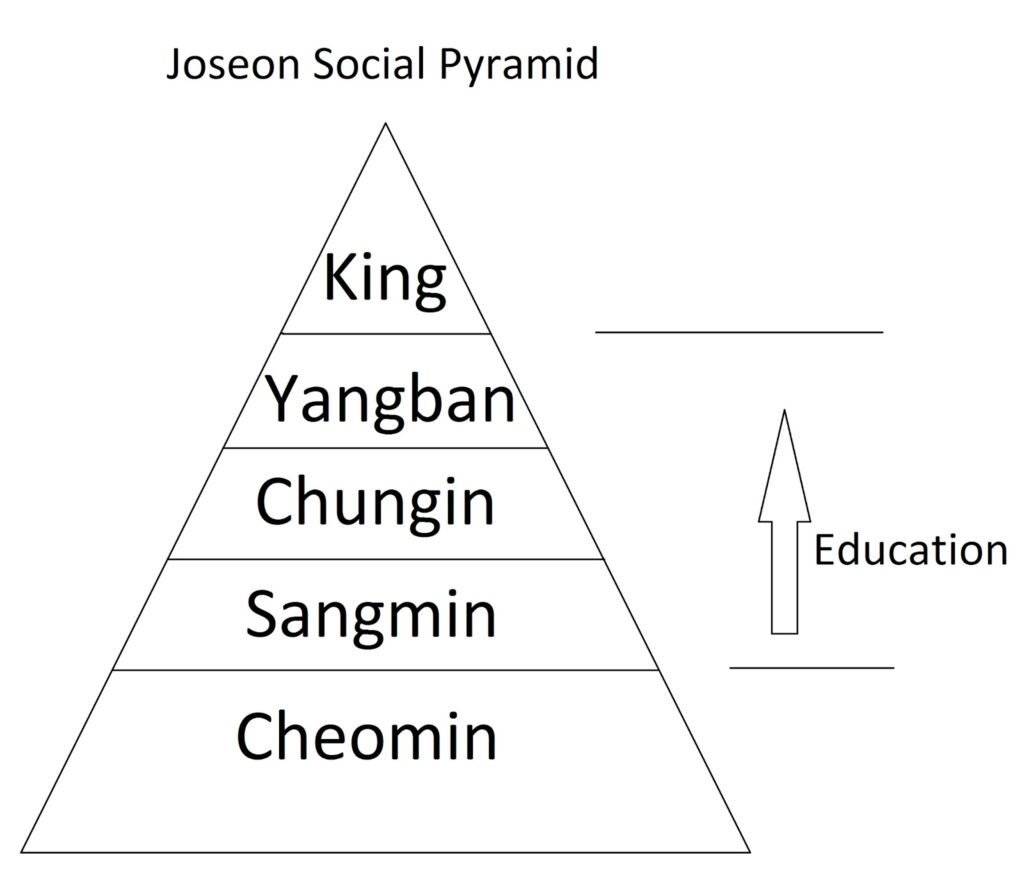
Joseon Society was divided into 5 basic levels: cheomin, sangmin, chungin, yangban, and the king and royal family. Sangmin and chungin could raise their social status through education.
At the top of society was the king who had ultimate say in matters, followed by the other members of the royal family. (The Yi family) All were expected to follow the rules of court extricate at all times.
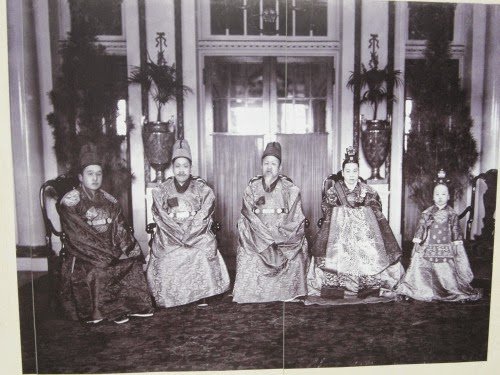
The next level down was occupied by the yangban, (aristocrats) who worked mainly as civil officials, military officials, scholars, and other high level positions. The members this prestigious group were usually wealthy, and wielded quite a bit of power, even at at the beginning of the dynasty, which only multiplied in Joseon’s later years until they would eventually rival the king in terms of influence and would act in a similar way to how the feudal lords of Europe and Japan had operated. (They could be oppressive to the lower classes) They were educated landowners, who had completed an examination to gain their rank, (also giving their family status as yangban, all the way to seventh cousins) (which was semi-hierarchal once achieved. (Lasted 3 generations without another member of the family passing an examination) exempting them from military service, and allowing them to collect taxes from their tenants, (both for themselves, and for the government) but were not subject to taxation themselves.
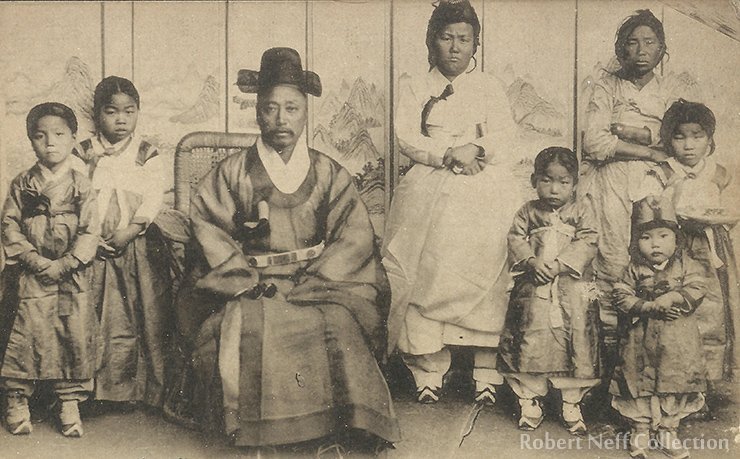
The next level down was occupied by the chungin (middle people) who worked as: accountants, administrators, artists, astronomers, calligraphers, doctors, de facto rulers in their local area, interpreters, jurists, local magistrates, professional military officers, translators and other occupations. This group also included the illegitimate children of yangban and concubines, and could sometimes be oppressive to the lower classes, and they were essentially yangban who had not completed the examinations necessary to gain the title and status of yangban. They were exempted from military service and taxes.
The next level down was occupied by the sangmin (common people) who worked as: craftsmen, farmers, fishermen, laborers, merchants, and peasants (tenant farmers) among other occupations and comprised approximately 75% of the population During the Joseon Dynasty, though they did not have family names. They were subject to military draft and often endured heavy taxes, (often as much as 50% of their income) causing many to be poor financially and making it very difficult for them to rise in society through education. They were seen as “clean” by the upper classes.
The bottom level was occupied by the cheomin (low born/despised people) who worked as: acrobats, actors, Buddhist monks/nuns, butchers, concubines, executioners, exorcists, gisaeng, (female entertainers who were trained in dance, poetry, and singing) grave diggers, hunters, jail keepers, magicians, metalworkers, mudang, (shamans) nobi, (slaves) professional mourners, servants, shoemakers, and tanners among other occupations, as well as beggars, and nomads were not allowed to live inside towns, or take examinations to improve their status, and did not have family names. Many nobi were people who were being punished for crimes, or not paying depts., but some people became slaves voluntarily in order to escape poverty, and still others were part of slave families which had been owned the upper classes for generations. Many of these generational nobi went out into the mountains and formed bandit groups. This group was considered “unclean” and often discriminated against by the upper classes. They were exempted from military service, and taxes.
NORMS & VALUES.
Norms and values in the Joseon Dynasty were heavily influenced by Confucianism putting a great emphasise on having a structured, hierarchal society in which order, (in theory) would thrive. Also partially as a result of Confucianism were the two values which defined the Joseon Dynasty more than any others: education and family. As with most aspects of the society, Values seem to have been placed in a hierarchical order of importance.
FAMILY.
Family was considered to be very important during the Joseon Dynasty and most families could trace their lineages back for many generations, and families were considered to be more of a whole and less the sum of its parts. Family not only played the role of supporting and nurturing children and the elderly, (most families were extended) a person’s family status very much determined their place in society. Cheomin and sangmin did not receive family names.
Elders were to be treated with great respect often leading to extended families as homes for elders were very uncommon during the Joseon Dynasty. A special ceremony called “hwangap” was held for an elder who had reached the age of 60, which was basically a birthday party on a grand scale that the family of the elder often spent as much as they could afford (sometimes more) on. (Very few people lived to the age of 60 during the Joseon Dynasty) After this ceremony the elder would be allowed to wear special clothing that designated them as an elder, and someone to be treated with the utmost respect. this deep reverence and respect extended even after a person died and the graves of parents, grandparents, great grandparents, etc. were lovingly tended to by their dependents.
Members of the same family lived in separate rooms. Thus, the Korean home contained one area for women and another for men.
EDUCATION.
Though formal education in the Joseon Dynasty was limited to those who could afford it, this dynasty is famous for the invention of the Hangul alphabet under king Sejong (1419-1450) which revolutionized the written word in the country due to its simplicity and ease of learning, making the Joseon Dynasty a land of near universal literacy.
Hangul (Alphabet) on the other hand was the alphabet of the people. Invented in 1443 under king Sejong, and widely distributed to the public in 1446, at the time called Hunminjeongeum. (Proper phonetic system to educate the people). This alphabet consisting of 24 basic symbols based on the shape of the mouth when pronouncing the syllable they represent, and was by far easier to learn than Chinese characters, which consist of tens of thousands of symbols. In fact Hangul has been called the world’s most logical alphabet, and is credited with being the easiest to learn. King Sejong is credited with claiming that Hangul was so easy to learn that a fool could learn hangul in as little as 10 days while a wise person could become literate in it in only a few hours.

Despite the creation of the Korean alphabet, Chinese was most often used by nobles and aristocrats, in medicine, art… This is why most of the characters found on certain pieces of furniture are rarely in ‘hangul’ but rather in Chinese ideograms.
CLOTHES.
The clothing worn by the people of the Joseon Dynasty was known as hanbok. And varied slightly in colour, material, and design among the different social classes with the garments of the rich tending to be made of luxurious materials such as silk and dyed in extravagant colours and usually consisting of robes of some sort, while the garments of the poor tended to be made of more affordable materials, (dye was an expensive commodity) such as hemp or ramie, were almost always white and were more practical for tasks that required physical labour. In both cases clothing was lightweight and comfortable to wear incorporating a sense of modesty. Wooden shoes or slippers were also worn.
Men usually wore a loose shirt, (sometimes with an overcoat) trousers that were tight at the ankles and waist, but baggy in the middle, stockings, and a hat. (if they were married)
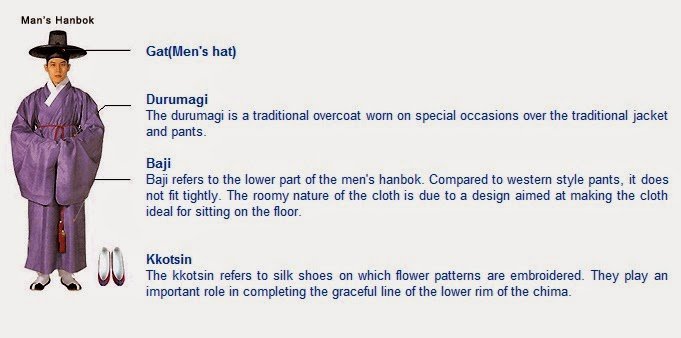
Women usually wore a high-waited dress and light jacket-style shirt, as well as stockings and various adornments.
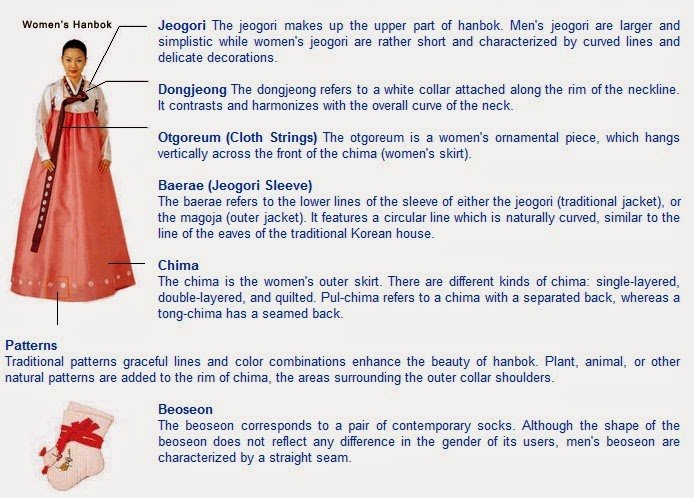
The Korean clothing consisted of several small pieces. When these were not in use, they were folded and stacked in furniture with small openings.
HOMES.
Joseon homes were known as hanok and were very distinctive in that they were essentially the same relative size, but made from different materials depending on the social class of the person who owns the house. In either case, homes followed the principles of fung sui and were designed to be cozy and comfortable, and though they could be a bit crowded, (often 6 or 7 people living in a small 3 room house) they provided a relatively high standard of living and general efficiency across Joseon society.
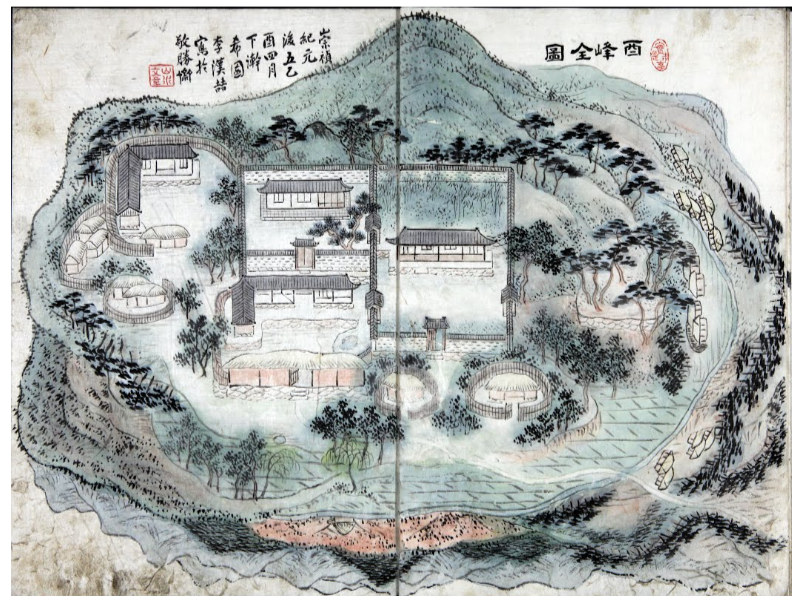
There was a great variety in the material hanok were made of, but often these houses were constructed of a pine frame, (put together through wood joinery) with loess, (a well insulating type of clay) walls, and had either a straw or tile roof (though wooden shingles were also used where locally available). They were usually L or U shaped in the southern part of the country and more square or somewhat circular in the northern part of the country though this was not always the case, and often faced towards a large central courtyard, (often containing many gardens) around which many members of an extended family lived; sharing the use of a common well. (There was no running water).
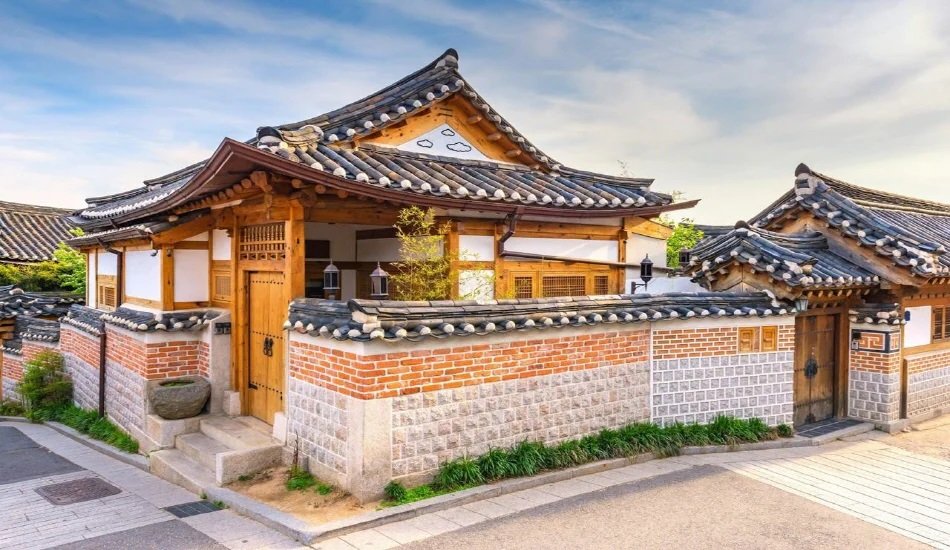
Ondol (in-floor heating) is probably one of the most distinctive features of Joseon homes. It consisted of a smoke-based underfloor heating system that was often attached to the wood burning-oven, (or furnace made specifically for ondol) and ran under 1 or more rooms before allowing smoke to escape through a freestanding chimney.
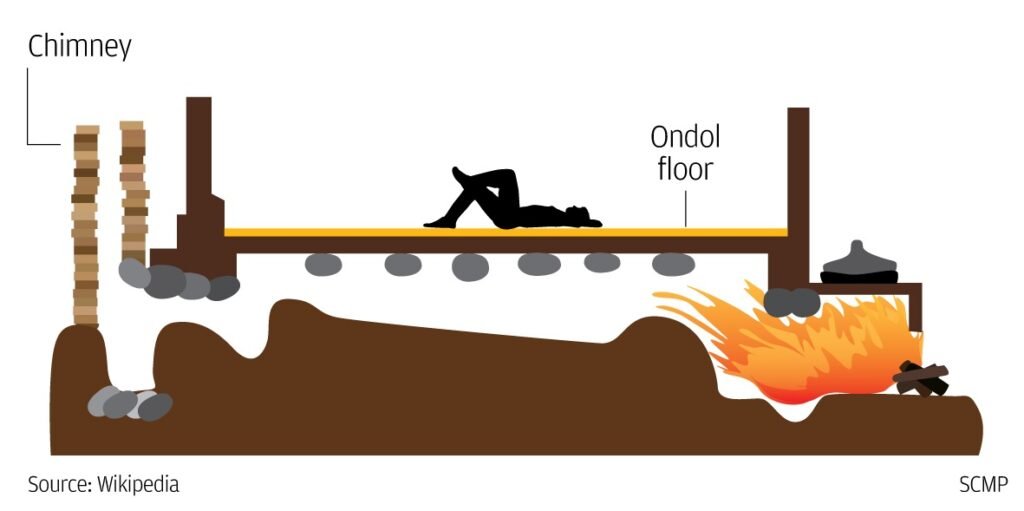
Furniture was suited to the heated floors and was made to be low to the floor, consisting items such as: dividing screens, low tables, mats, pillows, shelves, and yo. (Foldable mats that were used as bedding during the Joseon dynasty which could be set up at night in a room with ondol heating, usually a multipurpose living room (there were no rooms specified as bedrooms) other useful items included: abacuses, millstones, and water buckets among other things.
The houses were small with relatively low ceilings. For this reason, Korean furniture was compact and small in size.
LINKS: Hanok.
CHANGES TO THE JOSEON DYNASTY.
Social Structure: The social structure changed slightly over the course of the Joseon Dynasty then quite a bit in its later years.
Norms and values: Cultural norms and values shifted quite a bit during the Joseon Dynasty, from a Buddhist influenced nation of relative equality, to a neo-confusion dominated nation of strict hierarchy, then to somewhere in-between with the introduction of silhak, tonghak and numerous other ideas.
Family: With the adoption of neo-Confucianism at the beginning of the Joseon Dynasty Polygamy was made illegal in 1413, but not having concubines, which many yangban did. The resulting children of women other than the official wife were known as soja and considered illegitimate, ending up as outcasts in society. As the dynasty went on, men, particularly the eldest male, gained considerable power in the family while women and males who were not the first born, lost power in the family.
Education: The formal Joseon education system remained relatively unchanged until fairly late in the dynasty, when the first school for girls was opened in 1886 by Marry F. Scranton in the capital city of Hanseong. (Seoul) Further changes came in 1902 when the first modern schools opened, which allowed both boys and girls of any social class to attend.
Hangul was an education revolution in and of itself as before its distribution in 1446, the Joseon Dynasty used Chinese characters for writing, (A system consisting of 10s of thousands of symbols) which was difficult to learn, meaning few people could read and write. Hangul (consisting of 24 symbols) was easy to learn, (it could be learned in a matter of hours in fact) making literacy nearly universal.
Clothes: Clothing was generally less formal at the beginning of the Joseon Dynasty, and became more formal over time, with certain colours and/or materials being specifically designated for the various social classes. Some Western clothing also started to be worn by a few members of the upper classes late in the dynasty. Very late in the Joseon Dynasty a number of women in the lower classes began to bare their breast in public as a sign of their discontent with the way things were.
Homes: The way homes were built remained relatively unchanged throughout the Joseon Dynasty, but the furniture within them did gain more variety from roughly the 1850s onwards as Western furniture styles were adopted alongside more traditional styles and seem to have been considered as much of an exotic curiosity in Korea as Joseon furniture was in the west.
APPENDIX.
| Population | |
|---|---|
| • 1432 | 766,000 households |
| • 1519 | 3,300,000 households |
| • 1669 | 5,018,000 households |
| • 1721 | 6,970,000 households |
| • 1864 | 6,830,000 households |
Joseon Dynasties.
| King’s name | Period of reign | Personal name | Reign name | Posthumous name |
|---|---|---|---|---|
| Taejo | 1392–1398 | Yi Seong-gye later Yi Dan 이성계 later 이단 | King Kangheon Jiin Gyewun Seongmun Shinmu the Great 강헌지인계운성문신무대왕 | |
| Jeongjong | 1398–1400 | Yi Bang-gwa later Yi Gyeong 이방과 later 이경 | King Gongjeong Euimun Jangmu Onin Sunhyo the Great 공정의문장무온인순효대왕 | |
| Taejong | 1400–1418 | Yi Bang-won 이방원 | King Gongjeong Seongdeok Sin-gong Geoncheon Chegeuk Daejeong Gye-u Munmu Yecheol Seongnyeol Gwanghyo the Great 공정성덕신공건천체극대정계우문무예철성렬광효대왕 | |
| Sejong | 1418–1450 | Yi Do 이도 | King Jangheon Yeongmun Yemu Inseong Myeonghyo the Great 장헌영문예무인성명효대왕 | |
| Munjong | 1450–1452 | Yi Hyang 이향 | King Gongsun Heummyung Insuk Gwangmun Seonghyo the Great 공순흠명인숙광문성효대왕 | |
| Danjong | 1452–1455 | Yi Hong-wi 이홍위 | King Gongeui Onmun Sunjeong Anjang Gyungsun Donhyo the Great 공의온문순정안장경순돈효대왕 | |
| Sejo | 1455–1468 | Yi Yu 이유 | King Hyejang Sungcheon Chedo Yeolmun Yeongmu Jideok Yunggong Seongsin Myeongye Heumsuk Inhyo the Great 혜장승천체도열문영무지덕융공성신명예흠숙인효대왕 | |
| Yejong | 1468–1469 | Yi Gwang 이광 | King Yangdo Heummun Seongmu Euiin Sohyo the Great 양도흠문성무의인소효대왕 | |
| Seongjong | 1469–1494 | Yi Hyeol 이혈 | King Gangjeong Inmun Heonmu Heumseong Gonghyo the Great 강정인문헌무흠성공효대왕 | |
| Yeonsangun | 1494–1506 | Yi Yung 이융 | King Heoncheon Hongdo Gyungmun Wimu the Great 헌천홍도경문위무대왕 | |
| Jungjong | 1506–1544 | Yi Yeok 이역 | King Gonghee Hwimun Somu Heumin Seonghyo the Great 공희휘문소무흠인성효대왕 | |
| Injong | 1544–1545 | Yi Ho 이호 | King Yeongjeong Heonmun Euimu Jangsuk Heumhyo the Great 영정헌문의무장숙흠효대왕 | |
| Myeongjong | 1545–1567 | Yi Hwan 이환 | King Gongheon Heoneui Somun Gwangsuk Gyeonghyo the Great 공헌헌의소문광숙경효대왕 | |
| Seonjo | 1567–1608 | Yi Yeon 이연 | King Sogyung Jeongryun Ripgeuk Seongdeok Hongryeol Jiseong Daeeui Gyeokcheon Heeun Gyungmyung Sinryeok Honggong Yungeop Hyeonmun Euimu Seongye Dalhyo the Great 소경정륜립극성덕홍렬지성대의격천희운경명신력홍공융업현문의무성예달효대왕 | |
| Gwanghaegun | 1608–1623 | Yi Hon 이혼 | King Checheon Heungun Jundeok Honggong Sinseong Yeongsuk Heummun Inmu Seoryun Ipgi Myungseong Gwangryeol Yungbong Hyeonbo mujeong Jungheui Yecheol Jangeui Jangheon Sunjeong Geoneui Sujeong Changdo Sungeop the Great 체천흥운준덕홍공신성영숙흠문인무서륜입기명성광렬융봉현보무정중희예철장의장헌순정건의수정창도숭업대왕 | |
| Injo | 1623–1649 | Yi Jong 이종 | King Gaecheon Joun Jeonggi Seondeok Heonmun Yeolmu Myeongsuk Sunhyo the Great 개천조운정기선덕헌문열무명숙순효대왕 | |
| Hyojong | 1649–1659 | Yi Ho 이호 | King Heumcheon Daldo Gwanggok Hongyeol Seonmun Jangmu Sinseong Hyeonin Myeongeui Jeongdeok the Great 흠천달도광곡홍열선문장무신성현인명의정덕대왕 | |
| Hyeonjong | 1659–1674 | Yi Yeon 이연 | King Sohyu Yeongyung Dondeok Suseong Sunmun Sukmu Gyungin Changhyo the Great 소휴연경돈덕수성순문숙무경인창효대왕 | |
| Sukjong | 1674–1720 | Yi Sun 이순 | King Hyeoneui Gwangyun Yeseong Yeongryeol Yumo Yeongun Hongin Jundeok Baecheon Habdo Gyehyu Dokgyung Jeongjung Hyeopgeuk Sineui Daehun Jangmun Heonmu Gyungmyung Wonhyo the Great 현의광윤예성영렬유모영운홍인준덕배천합도계휴독경정중협극신의대훈장문헌무경명원효대왕 | |
| Gyeongjong | 1720–1724 | Yi Yun 이윤 | King Gakgong Deokmun Ikmu Sunin Seonhyo the Great 각공덕문익무순인선효대왕 | |
| Yeongjo | 1724–1776 | Yi Geum 이금 | King Jangsun Jihaeng Sundeok Yeongmo Uiryeol Jang-ui Hong-yun Gwang-in Donhui Checheon Geon-geuk Seonggong Sinhwa Daeseong Gwang-un Gaetae Giyeong Yomyeong Suncheol Geon-geon Gonyeong Baemyeong Sutong Gyeongnyeok Honghyu Junghwa Yungdo Sukjang Changhun Jeongmun Seonmu Huigyeong Hyeonhyo the Great 장순지행순덕영모의렬장의홍윤광인돈희체천건극성공신화대성광운개태기영요명순철건건곤영배명수통경력홍휴중화융도숙장창훈정문선무희경현효대왕 | |
| Jeongjo | 1776–1800 | Yi San 이산 | King Gyeongcheon Myeongdo Hongdeok Hyeonmo Munseong Muryeol Seongin Janghyo the Great 경천명도홍덕현모문성무렬성인장효대왕 | |
| Sunjo | 1800–1834 | Yi Gong 이공 | King Seongak Yeondeok Hyeondo Gyeongin Sunhui Cheseong Eungmyeong Heumgwang Seokgyeong Gyecheon Baegeuk Yungwon Donhyu Euihaeng Soyun Huihwa Junryeol Daejung Jijeong Honghun Cheolmo Geonsi Taehyeong Changun Honggi Gomyeong Bakhu Ganggeon Sujeong Gyetong Suryeok Gongyu Beommun Anmu Jeongryeong Gyeongseong-hyo the Great 선각연덕현도경인순희체성응명흠광석경계천배극융원돈휴의행소윤희화준렬대중지정홍훈철모건시태형창운홍기고명박후강건수정계통수력공유범문안무정령경성효대왕 | |
| Heonjong | 1834–1849 | Yi Hwan 이환 | King Jangsuk Chegeon Gyegeuk Jungjeong Gwangdae Jiseong Gwangdeok Hongun Janghwa Gyungmun Wimu Myeongin Cheolhyo the Great 장숙체건계극중정광대지성광덕홍운장화경문위무명인철효대왕 | |
| Cheoljong | 1849–1864 | Yi Byeon 이변 | King Huiyun Jeonggeuk Sudeok Sunseong Heummyung Gwangdo Donwon Changhwa Munhyeon Museong Heonin Yeonghyo the Great 희윤정극수덕순성흠명광도돈원창화문현무성헌인영효대왕 | |
| Gojong | 1864–1897 (1897–1907)2 | Yi Myeong-bok 이명복 | Gaeguk 개국 and Geonyang 건양 and Gwangmu 광무 | Emperor Tae 태황제 |


[…] JOSEON – 조선 : Last Korean dynasty ( 1392 to 1910 ). Also referred as Yi or Choson Dynasty. […]